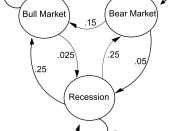1. Introduction
There are many reasons to interconnect satellite and ATM networks, mainly the possibility of very fast deployment of large-scale broadband services over wide geographical areas. However, several problems arise that prevents a seamless integration of these two technologies. For example, the cell transport method should be adapted to the burst error characteristics of satellite links, which are very different to those of fiber optic; the link access schemes should be optimized for ATM technology; more elaborate traffic management procedures are necessary in order to maintain the QoS of ATM connections over satellite channels; etc.[1]
Several of these problems can be better dealt with if we allow for onboard processing. In fact, the requirement of inexpensive and small user terminals has been satisfied by the use of multiple beams, which suggests the possibility of some form of switching between beams. Of course, the space environment imposes several constraints to the onboard switches, which should be added to the typical system requirements found in terrestrial networks.
These constraints include, mainly, lightweight to meet the size, mass and power limitations of the satellite, and increased fault tolerance to meet the expected life reliability of the satellite. [2]
For all these reasons, it has been asked if terrestrial ATM cells should be grouped into frames before transmission over satellite channels for onboard switching [3]. In effect, if each user sends its cells directly to the satellite, the contention will work in a cell basis as well as the onboard switching operations, i.e., one contention and one switching operation per cell slot. But if we form clusters of users within each spot beam, grouping their cells into frames according to their destination and sending these frames to the satellite, then the number of contenders, the number of contentions and the number of switching...


